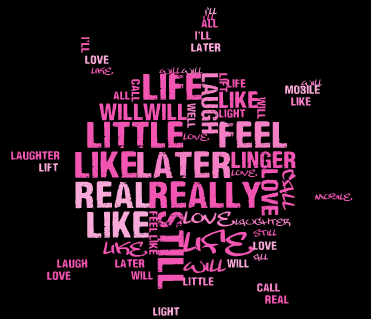When L is at the end of the word, we add an extra sound before the l, and hold this sound into the L sound. This extra sound is the vowel schwa, which sounds like "uh." To get this sound, try slowing down and sliding from one vowel to the next. For example, try the following words using the recording below:
tool (too-w-uh-l) tail (tay-y-uh-l) feel (fee-y-uh-l) fuel (fyoo-w-uh-l)
0 Comments
How well can we understand each other? Does our experience listening to non-native speakers help or hinder our ability to understand when listening situations are difficult? Apparently, we may actually be biased based on our experience. In a study reported in the Journal of the Acoustical Society of America, researchers found that those with experience interacting with Chinese Canadians had a slight bias toward misunderstanding native-speaking Chinese Canadians as compared with white Canadians when they were shown a photo of the speaker. They showed no difference in their ability to correctly transcribe the speech of the two groups when no photos were shown. Read more about the findings here.
Vowel sounds are always voiced (the vocal folds buzz when saying these sounds). Consonant sounds can be either voiced or voiceless, and they come in pairs called cognates. Why is it helpful to know about voiced and voiceless cognate sounds? A frequent error in accented speech is the de-voicing of final consonants. What this means is that the speaker does not use any or enough voicing (buzzing of the vocal folds) on the last sound of the word, so it sounds like the voiceless cognate. This occurs for various reasons. The speaker's native language may not have words that end with voiced sounds. The speaker may be listening to American English speech, and not really hear or notice the voicing on the ends of words when listening to Americans. Or the voiced sounds might be part of a group of consonants at the end of the word, and the challenge of producing this consonant cluster makes using correct voicing difficult.
Whatever the reason, attention to this error is important because you may sound like you are saying a different word than you are. Your listener will likely understand based on the context, but having to interpret what you are saying puts an increased cognitive load on the listener, and they may struggle to follow what you are saying as a result. The pairs of consonant sounds are as follows: voiceless: t voiced: d Examples: to, do voiceless: p voiced: b Examples: poor, boor voiceless: k voiced: g Examples: came, game voiceless: f voiced: v Examples: fan, van voiceless: s voiced: z Examples: sip, zip voiceless: sh voiced: zh Examples: mesh, measure voiceless: ch voiced: j Examples: choke, joke voiceless: th (IPA /θ/) voiced th (IPA /ð/) Examples: thigh, thy One helpful way to ensure you are pronouncing the final consonant with the correct voicing is to lengthen the vowel sound before the voiced consonant. For example, when we say the word "bead," we hold the vowel ee for a little step down because the "d" is voiced. When we say the word "beat" we don't hold the vowel ee for any additional length. Listen to the pairs below and try making a longer vowel and voiced sound to end the word. Then try some of the words in the list on your own.
beat bead
bop Bob pick pig leaf leave bus buzz mesh measure rich ridge breath breathe Do you have some words which you find difficult to say? Do you know which sounds are different in your accent? Whatever your pronunciation difficulties, understanding the approaches to changing pronunciation can help you address your goals. While accented speech is comprised of several elements, pronunciation is one aspect which many speakers and listener can identify as sounding different. Some sounds in American English are infrequent or nonexistant in other languages and must be learned and practiced in a hierarchy to develop the sound. Others are easier to say, but hard to use in running speech. Understanding the levels of practice is an important step to changing your speech. 1. Sound level (phonemes): This level is single sounds. Practicing at this level is usually only necessary when the sound is new to you, but knowing how to say a sound by itself correctly is helpful and can be used as a tool when working at more challenging levels. Use the recordings below to try some of the American English phonemes which are most frequently mispronounced in accented speech.
2. Syllable level: This level is target sound plus an additional sound. If the target is a consonant, the additional sound is a vowel, and vice versa. While two sounds together can make a word, syllables can also be part of a word or just a nonsense word. Practice at this level is useful when breaking down difficult words, integrating a difficult target into words, or changing a habitual pattern with the target sound. The recording below demonstrates how to add various vowels to the challenging target voiceless th (IPA symbol: /θ/). 3. Word level: This level is the target sound in real words. The target could be in the beginning, middle or end of the word (initial, medial or final position). Depending on your native language, you may only need to practice one word position. Sometimes speakers have an accurate phoneme in the initial position, but make errors when the target sound is in word-final position. For example, you may be able to use your voiceless th sound correctly in the word "think," but have an error pattern on the word "teeth." You can try some words with initial, medial and final voiceless th sounds using the recordings below. 4. Phrase or Sentence level: The next step to changing a pronunciation pattern is to use the target sounds at the phrase or sentence level. Once you have achieved accurate productions at the word level, you can imitate or create sentences using the same words you practiced at the word level. This is more challenging because you are having to hold the new target in your mind as you say the sentence. If needed, you can practice at different levels within this step. Easiest, imitate a sentence with the target word at the beginning of the sentence. Next easiest, imitate a sentence with the target word in the middle or end of the sentence. Next, create your own sentence with the target word at the beginning of the sentence, and last, create a sentence with the target word in the middle or the end of the sentence. Use the recordings below to try the target voiceless th in imitated sentences. Then make your own sentences with voiceless th words. 5. Conversational level: This is the goal and the final step in changing pronunciation. Sometimes transitions between steps 4 and 5 are necessary, such as practice while reading aloud. There are many techniques to moving from the sentence to the conversational level, including raising awareness of where your targets occur and repeat motor practice to gain automaticity.
One of the most common errors for those learning the American accent is the vowel in the words it and him, referred to on this site as “Vowel I" or /ɪ/. This sound is frequently confused with the vowel in the words eat and seem, “Vowel ee or /i/.” These two sounds are similar, but Vowel ee /i/ has a more exaggerated smile posture for the lips, and the front of the tongue is slightly higher in the mouth. Vowel ee /i/ is a tense vowel, meaning that the muscles in the face are engaged. Vowel I /ɪ/ is a lax vowel, meaning the lips and face need to be relaxed. Practice going from one sound to the next to feel the different postures for your lips and tongue. Use the video to help you. One way to solidify the distinction is to practice with minimal pairs, or words that differ only by this vowel sound. Listen to the following sets of words, and practice making a clear contrast between vowel ee /i/ and vowel ɪ. For even more practice, use these short phrases which contrast the ee and I vowel sounds.
|
Subscribe to this blog:
Categories
All
Archives
March 2021
Copyright 2020
Christine Dunbar Have Questions?
Get A Free Consultation We offer a free 30-minute phone consultation. Schedule yours now. |




 RSS Feed
RSS Feed



